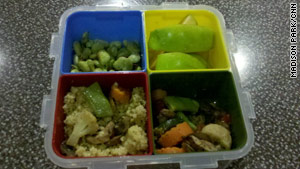By MEREDITH MELNICK
More bad news, diet soda drinkers: data presented recently at the American Diabetes Association's (ADA) Scientific Sessions suggest that diet drinks may actually contribute to weight gain and that the artificial sweeteners in them could potentially contribute Type 2 diabetes.
In one study, researchers from the School of Medicine at The University of Texas Health Science Center San Antonio, looked at aggregate data from 474 older adults in the San Antonio Longitudinal Study of Aging, or SALSA. At the time of enrollment and at three follow-up exams thereafter, all participants reported their diet soda intake and were measured for height, weight and waist circumference. The researchers wanted to track any association between diet soda drinking and body fat over time.
What they found was that all participants saw their waistlines expand, but those who reported drinking diet soda had 70% greater increases in waistline growth than non-drinkers 9.5 years later. Among frequent drinkers — those who consumed two or more diet sodas a day — waistline growth was 500% greater than among non-drinkers. Researchers said their results were adjusted for other contributing factors like diabetes status, leisure-time physical activity level and age.
The data didn't say why diet sodas might play a role in weight gain, but previous research suggests it has to do with the disconnect between the taste of artificial sugars and their lack of calories. The brain is wired to expect a big load of calories when foods taste sweet or fatty. But because diet foods fail to deliver, it throws the brain out of whack. Studies in animals suggest that artificial sweetener consumption may lead to even more eating and weight gain, perhaps in part because it triggers the body to start storing more calories as fat.
Excess weight, especially around the belly, as measured in the SALSA participants, is a risk factor for a variety of ills, including cardiovascular disease and diabetes.
In another study presented at the ADA meeting, researchers found an association between consumption of aspartame, an artificial sweetener found in many diet drinks, and elevated fasting glucose levels in mice.
The researchers, also from the School of Medicine at The University of Texas Health Science Center San Antonio, fed 40 mice their typical chow with added corn oil (to make the diet high-fat). For the half the mice, researchers also added aspartame to their food. After three months, researchers found that the mice in the aspartame group had elevated fasting glucose levels, an indication of a diabetic or pre-diabetic condition.
Of course, the findings aren't directly translatable to humans, but the researchers think they're still meaningful. "These results suggest that heavy aspartame exposure might potentially directly contribute to increased blood glucose levels, and thus contribute to the associations observed between diet soda consumption and the risk of diabetes in humans," said Dr. Gabriel Fernandes, a University of Texas professor of rheumatology and clinical immunology, in a statement.
Maybe it's time to switch to water.



















